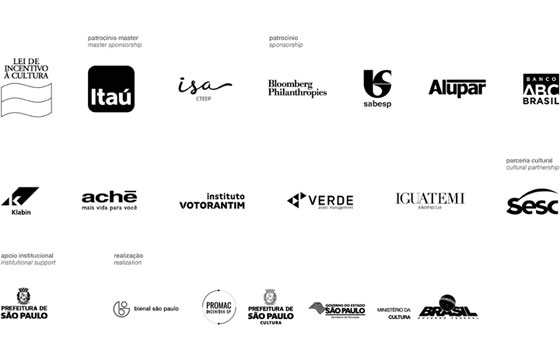Lucia Nogueira talks about an installation at the Anthony Reynolds Gallery, London, Spring 1992. Audio Arts Volume 12 No 1, Inlay 1, published in 1992. Archive reference: TGA200414/7/3 Volume 12 No 1. © William Furlong.
Lucia Nogueira fala sobre seu trabalho na Galeria Anthony Reynolds, Londres, 1992. Audio Arts Volume 12 Nº 1, Inlay 1, publicado em 1992. Referência do arquivo: TGA200414 / 7/3 Volume 12 Nº 1. © William Furlong.
Basicamente, são impressões de coisas que vejo nas ruas a todo momento. É como um disparo fotográfico, em sua cabeça, que fica ali e, às vezes, é preciso que você o veja novamente para ter outro olhar sobre ele. Tenho certeza de que o processo do trabalho se relaciona diretamente às minhas origens. O modo de pensar claramente vem do Brasil, e também a maneira de escolher, de selecionar objetos. De certo modo, o Brasil não é linear como um país europeu. Vocês têm um pensamento linear. Têm uma história da arte muito rica aqui, e nós não temos isso no Brasil. Acho que a forma como desenvolvemos nosso sentido visual é diferente dos europeus, porque não somos ensinados sobre arte nas escolas como vocês são aqui. Nós não temos isso lá, quer dizer, eu propriamente não tive. Fazemos tudo de maneira muito empírica, até a arte. Acho que se você está produzindo arte e vivendo em um determinado lugar, obviamente tudo que você faz é um pouco ditado pelo que encontra ao seu redor, coisas que conectam com o que você realmente é, coisas que você leu no jornal... É como botar tudo em um caldeirão e no final aquela mistura parece algo diferente. É uma espécie de obsessão por elementos visuais que se encontra. É fascinante, na verdade. Acho que a melhor parte de fazer arte é encontrar essas coisas muito mundanas e singelas, sabe?
Às vezes penso que meu trabalho é todo sobre lacunas. Você tem uma rotina linear que segue em sua vida até que, de repente, algo acontece e essa linha se rompe. Acho que todos, homens e mulheres, passaram por essas lacunas, é parte da vida, parte do ser humano. Às vezes acho que meu trabalho é sobre alguém... Tudo bem, há algo nele sobre ser brasileiro, mas é sobre alguém que é estrangeiro. Porque quando se é estrangeiro, é preciso estar completamente alerta o tempo todo. Você não pode relaxar. Tem que estar atento ao que está acontecendo, porque você não é daquele lugar. Se você está morando em outro lugar, não importa há quanto tempo você vive lá, sempre há algo novo com que você tem que lidar. É como estar a todo momento em uma corda bamba. Mas é muito bom, porque nos faz pensar o tempo todo. Você não pode deitar-se e dizer: Ok, é isso.
Basically it’s impressions of things that I see on the streets all the time, its like photograph shots, in your head, it stays there and sometimes I actually go back to the sites again just to have another look. I’m sure the process of work is very much connected with my background. I’m pretty sure about this. The way of thinking is very much from Brazil and also the way of choosing, the way of picking up objects too. In a way, it is a country that is not linear like a European country. You have a linear thought. In art, obviously you do, because you have a background of art history very rich. And we don’t have that in Brazil, not of visual arts at all. I think the way we developed our visual sense is different from the Europeans because we are not taught at schools about art like you are here. We don’t have that there, I mean, I didn’t have that myself. I don't know, you just do everything in a very empirical way, everything, even art. I think if you are making art, and you’re living in a certain place, obviously everything one does is a bit dictated by what you find around you… things that somehow connect with exactly what you are, you have in your head, those things you’ve read on the newspaper... It’s a melting pot, and in the end it comes out as something else. It’s a kind of obsession with visual elements you just find. It’s fascinating, actually. I think the best part of making art is encountering those very mundane and silly things that you find around, you know?
I sometimes think that my work is all about gaps. You have a linear, a routine in your life that carries on, and then suddenly something happens and it goes down and just breaks the line. I think everybody, men and women, has passed those gaps, it’s part of life anyway, you know. It's just being human somehow, you know? I sometimes think my work is about someone… Ok, there’s something about being a Brazilian, but it’s about someone who’s a foreigner, too. Because when one is a foreigner one has to be completely alert all the time. You can’t just relax all the time. You have to be aware of what is going on all the time, because you are not from that place. If you are living somewhere else, it doesn’t matter how long you live there, there is always something new that comes out, and you have to know how to deal with it. It’s like being on a tight-rope all the time. But it’s quite nice. I think it's really nice because it makes one think all the time. You can't just lay down and say: Ok, that's it.


